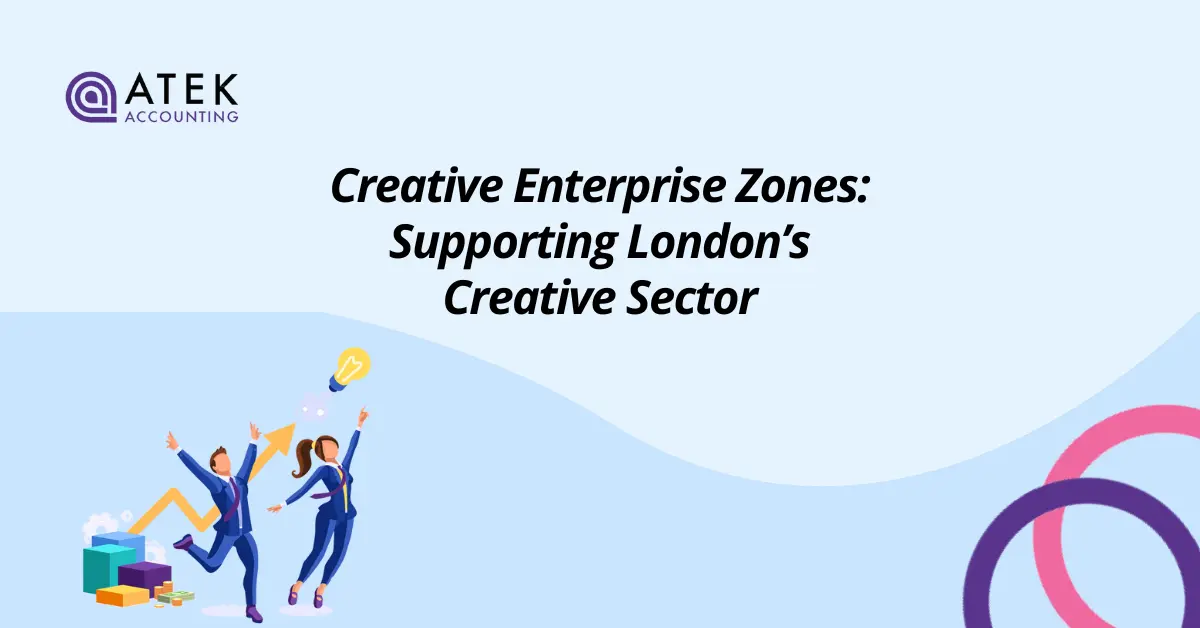
How Creative Enterprise Zones Are Supporting London’s Economy
Since their launch in 2018, Creative Enterprise Zones (CEZs) have made a remarkable impact on London’s creative economy, not only creating thousands of new jobs but also offering vital support to artists and creative businesses.
Take Hackney Wick, for example. It was once a struggling area for creatives, but now it’s a vibrant hub, with employment in the creative sector up by 60%.
It’s a perfect example of how Creative Enterprise Zones are helping to turn things around for communities while also ensuring creatives don’t get pushed out by rising costs.
In this article, we will explore the impact of CEZs on London’s creative industries and look ahead to what’s next for these dynamic hubs.
What Are Creative Enterprise Zones?
Creative Enterprise Zones (CEZs) are specially designated areas in London where artists and creative businesses are supported through a range of initiatives.
These initiatives include affordable workspaces, business and skills support, business rate relief, and access to super-fast broadband.
These zones aim to give creative professionals the chance to build lasting careers and establish roots in their communities without the threat of being priced out.
Where Are the Creative Enterprise Zones in London?
As of March 2025, London has established 12 Creative Enterprise Zones (CEZs), each providing tailored support to different parts of the creative sector.
These zones are located in:
-
Brent (Ealing Road and Alperton)
-
Croydon (Croydon Creatives)
-
Ealing (Acton and Park Royal)
-
Hammersmith & Fulham
-
Haringey (Made By Tottenham)
-
Hackney and Tower Hamlets (Hackney Wick & Fish Island)
-
Hounslow (Great West Creatives)
-
Islington
-
Lambeth (Brixton)
-
Lewisham (SHAPES)
-
Waltham Forest (Blackhorse Lane)
-
Westminster (North Paddington)
You can learn more about each CEZ location here.
Recent Expansion of Creative Enterprise Zones
In July 2023, Brent, Islington, and Westminster were officially added to the list of CEZs, bringing the total number to 12.
Each of these boroughs will focus on initiatives specific to their local creative industries:
-
Brent: Aiming to boost the music and performing arts sectors
-
Islington: Focusing on digital and design industries
-
Westminster: Providing support for fashion and film
The Impact and Success of Existing Zones
A recent report has revealed that the Mayor’s first six Creative Enterprise Zones have become key hubs for the creative economy.
These zones not only supported job creation and business growth during the pandemic, but they also bounced back faster than the broader creative sector.
The Creative Enterprise Zone Impact Report takes a look at the years between 2018 and 2021, showcasing:
-
Creative jobs in Brixton grew nearly four times faster than in London’s wider creative economy.
-
Croydon’s music, performance, and visual arts sector grew twice as much in the zone than across the wider London.
-
The music, performance, and visual arts sector in Deptford and New Cross made a dramatic recovery from a 36% drop to a 12% increase in creative jobs over pre-pandemic levels.
-
Nearly all sectors of the creative industries in the Hackney Wick and Fish Island zone experienced an increase in jobs and businesses and saw their turnover grow year on year.
-
The Hounslow zone screen and digital industries now account for nearly 89% of creative industry turnover in the area.
-
In Tottenham, creative businesses grew by 35%, despite the challenges of the pandemic and the cost of living crisis.
Sustainable Initiatives Within CEZs
In September 2022, the Mayor of London announced a £1.2 million fund to support sustainability initiatives within London’s Creative Enterprise Zones (CEZs).
Grants of up to £200,000 were allocated to nine projects aimed at enhancing energy efficiency and sustainability in creative workspaces.
The funded projects include:
-
Brixton Zone: £200,000 to create a new energy efficient workspace created on the top floor of cultural organisation, Raw Materials, supporting its membership of local artists and makers.
-
Hounslow Zone: £180,000 for improved insulation and a more energy-efficient heating system at Chiswick House and Gardens’ Creative Campus.
-
Waltham Forest’s Blackhorse Lane Zone: £200,000 to access high-quality materials for retrofitting Sutherland Studios to meet energy standards.
These initiatives are designed to benefit over 500 creative businesses by providing greener, more cost-efficient environments while maintaining affordable spaces.
For more detailed information, you can refer to the official announcement on the London City Hall website.
Future Goals of London’s Creative Enterprise Zones
By 2026, the creative enterprise zones are expected to deliver:
-
71,000 square metres of affordable creative workspace
-
Support for 800 businesses
-
500 new jobs
-
Opportunities for 5,000 young Londoners to enter the creative industries
Deputy Mayor for Culture and the Creative Industries, Justine Simons OBE, said:
“London is a thriving creative capital, which is powering our economy and bringing people from all different backgrounds and communities together.
“Central to our success is a super talented and committed creative workforce – artists, designers, craftspeople and photographers, but what they need is affordable space. So, I am delighted to see the impact our Creative Enterprise Zones are having – reversing the trend of artists moving out of London”
“The Zones are on track to deliver more than 70,000 sqm affordable long-term space by 2026, supporting hundreds of creative businesses, jobs and thousands of young Londoners into the creative industries”
Atek’s Commitment to Creative Businesses
At Atek, we are dedicated to supporting creative businesses, especially those in the performing arts and digital creative sectors.
If you’re part of the creative community, we’re here to help you navigate these opportunities and take control of your finances.
Get in touch with us today to find out how we can support your business.
More resources:





